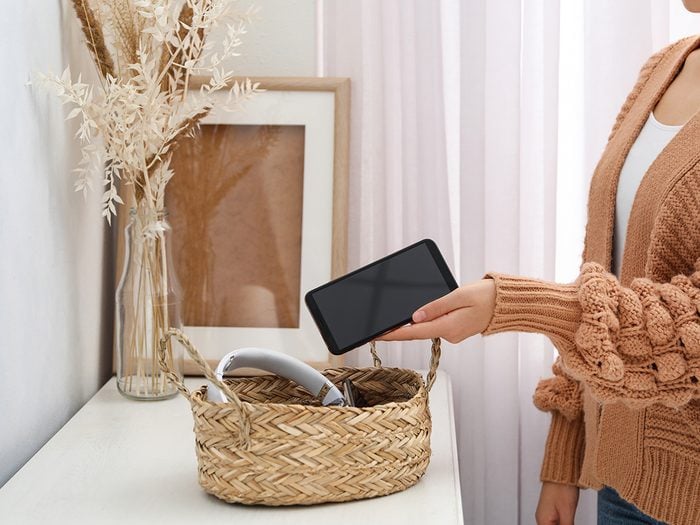
How to Spend Less Time on Social Media
At their best, social media platforms like Facebook, Twitter, Instagram and Snapchat can serve as a constant link with our friends and family. We rely on them to keep us connected and up-to-date, while giving us the opportunity to share both validation and inspiration (thank you, Pinterest).
That said, digital overstimulation—especially in a time when up-to-the-minute information is free and unfiltered—is taking a toll on our health, both mentally and physically. A study from the University of Pittsburgh’s Center for Research on Media, Technology, and Health found that using multiple social media platforms increased the risk of depression and anxiety in participants, especially among those using seven to 11 platforms, compared to peers who used no more than two.
And apparently, we’re conscious of at least some of these negative side effects of social media addiction. In a recent survey about New Year’s resolutions, the number one goal reported by respondents for the year ahead was to quit social media, easily beating out old standbys like quitting smoking and losing weight.
If you’re reading this and thinking to yourself, “I need a break from social media,” we’ve got you covered. Find out how to spend less time on social media by adopting these expert-approved strategies.
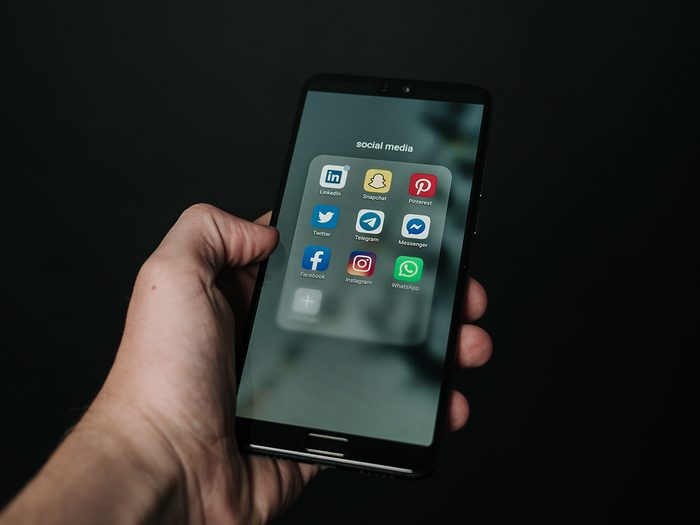
Delete social media accounts you don’t use
According to Marie Potter, Marketing Director for the Professional Organizers in Canada, the first step in overcoming social media addiction is to consolidate your devices and delete all the platforms you don’t use. If this task in itself seems overwhelming, break it down into bite-sized chunks. “Start by taking 10 minutes a day to declutter your devices,” Potter says.
Check out more pro tips on how to organize your digital clutter.
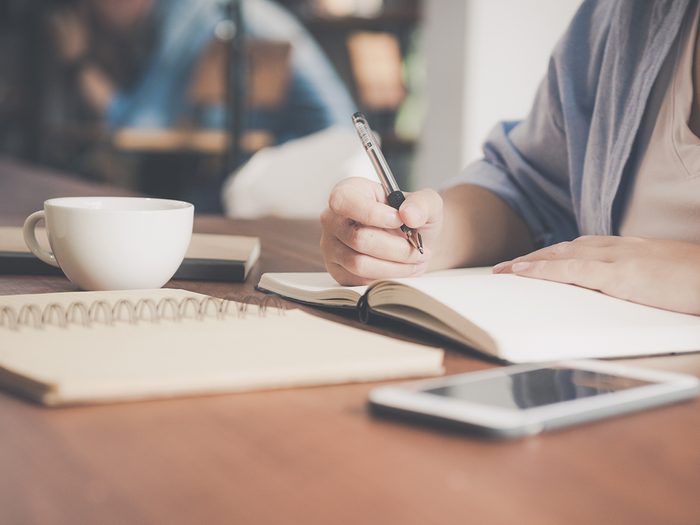
Be realistic when setting goals
Instead of quitting social media cold turkey, Potter suggests making “micro-commitments” in a gradual weaning process. “Make these goals realistic and attainable,” she says. These might include declaring a 30-minute social media time-out while at work, or setting aside an entire day as a social media blackout. It might even be as simple as limiting yourself to checking your phone during your morning coffee break—whatever it takes to rein-in the habit.

Be mindful of time spent on social media
Potter recognizes that social media is a very powerful force—powerful enough to make users lose all sense of time. To counter this, she suggests setting a time limit before scrolling through your various social media feeds. “Use an actual timer to indicate when your browsing time is up,” she says. “Otherwise it’s very easy to continue down the rabbit hole of information.” No egg timer handy? Try setting a calendar reminder on your smartphone or desktop.
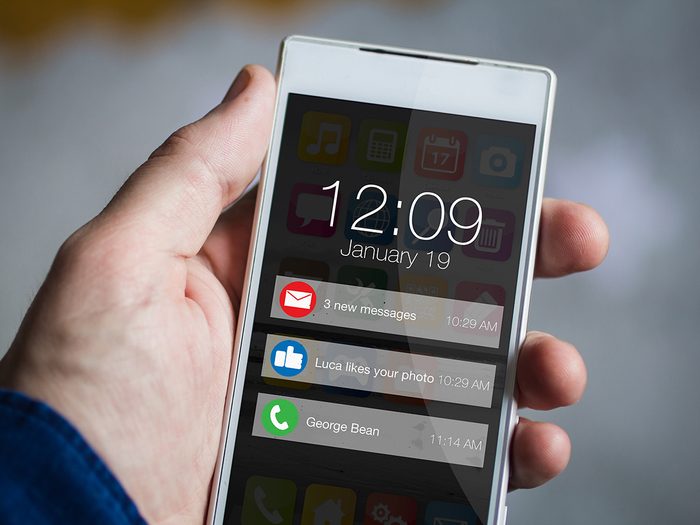
Turn off “push” notifications on social media
We’re constantly drawn to our phones with every sound, buzz or flash from the notifications light. Potter says one of the easiest ways to reduce your time spent on social media is to turn off these “push” notifications, and mute apps that trigger an insatiable urge to check for updates.
Here’s why you need to stop commenting on those viral Facebook memes.
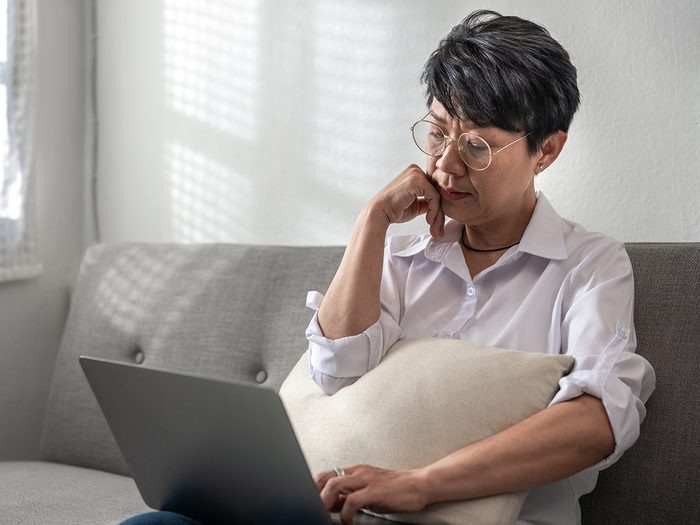
Don’t feed the trolls
Before firing off an angry reply to that Tweet that’s left you seeing red, heed Potter’s advice to “follow and engage with care.” According to Potter, negative influencers and stress triggers (read: Internet trolls) who lurk in social media feeds can actually take a toll on your mental health. “Think about your physical environment and how you surround yourself with the people and things that you love and care for. This should also apply to your social media space,” she says.
Here are 10 mental health podcasts worth adding to your playlist.
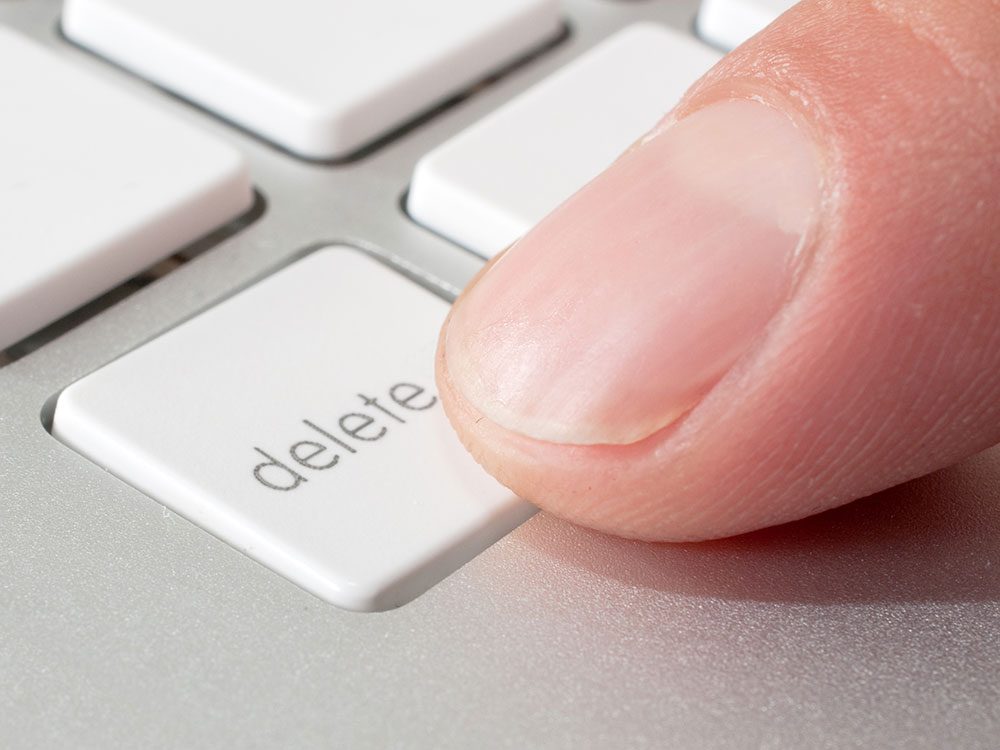
Purge your “friends” and “follow” lists
It’s difficult to purge your “friends” and “follow” lists because social media makes us feel connected. “People have this sense of not wanting to miss out,” Potter says. “We think that if we make the connection, we might need them at some point.”
Nevertheless, there’s no harm in going through your social media contact lists and hitting the “delete” button, especially after you’ve asked yourself these three questions:
Do you know them in real life?
Do they add positive value to your life?
Are they a trigger?
If you’ve answered NO, NO and YES, hitting the “delete,” “unfriend,” or “unfollow” button can help make a difference to your long-term health and well-being.
Find out what happened when one Toronto woman quit her smartphone altogether.
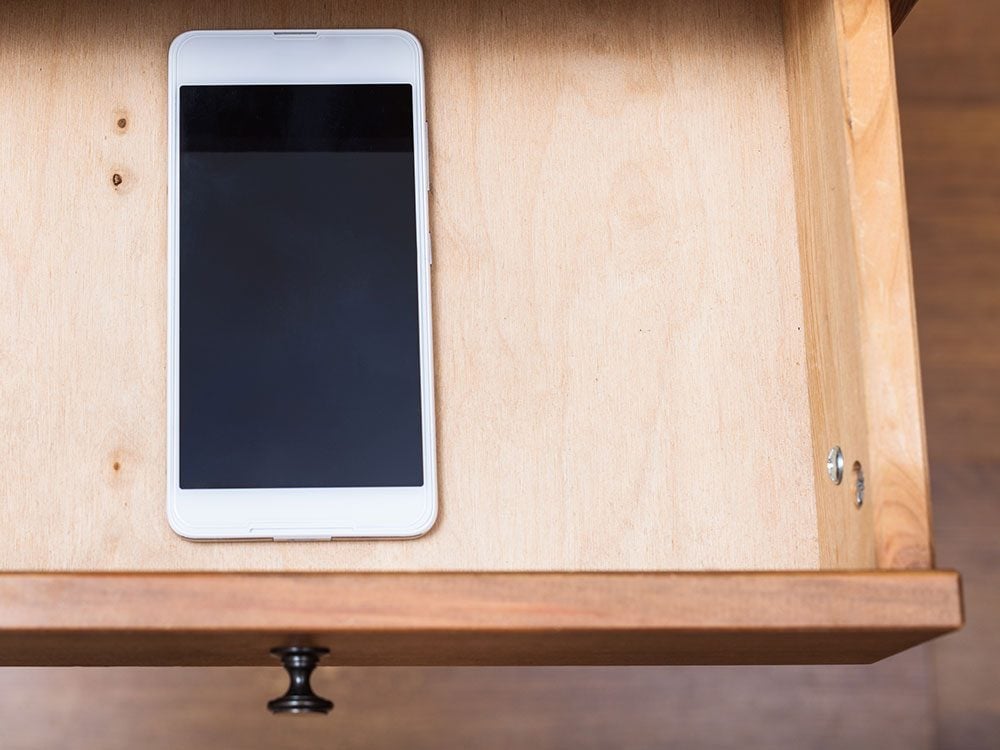
Create physical distance between you and your devices
Do you sleep with your smartphone next to your bed? Arianna Huffington, author of Thrive and founder of ThriveGlobal.com, says that when she’s ready for bed, she “escorts all her devices out of her room” and shuts the door. This habit allows her to get a good night’s sleep and focus on mindfulness, without the incessantly flashing notifications light or the buzz of a 2 a.m. text.
If it’s during the day, Potter suggests keeping your phone in an inconvenient location. “I have a client who drives with her phone in the trunk of her car to avoid distraction,” she says. “We are creatures of convenience, so create distance and make it a chore to retrieve your phone.”
Check out our ultimate sleep hygiene checklist.
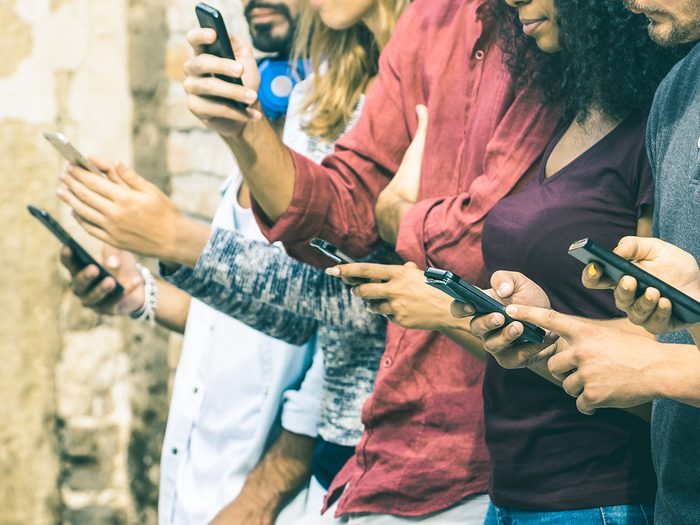
Consider a 30-day extreme digital detox
Though it might seem impossible, you actually do have the power to completely disconnect from social media—even for as long as a month. “Start by letting people on your feeds know that you’ll be switching off, and offer alternate ways for them to reach you,” Potter says. “Then, set a deadline and begin switching off. You’ll be amazed at how much time you’ll get back in your day to focus on the people and things that matter.”
Discover 40 secrets to a happier life.
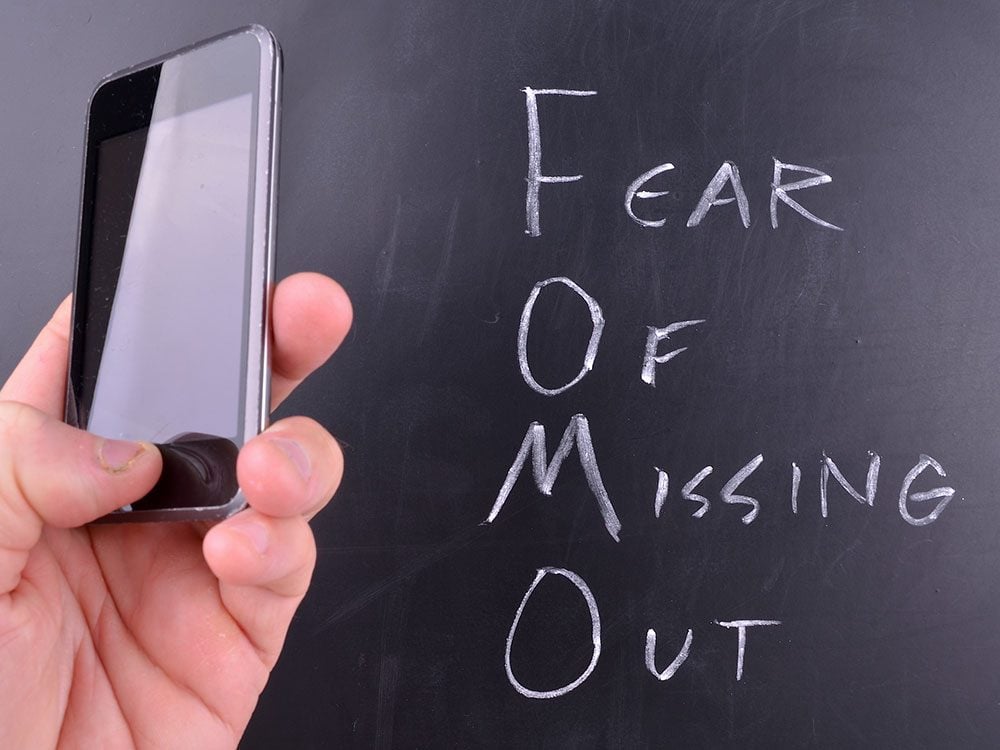
Learn to let go of social media—and refocus your priorities
A big concern with taking a break from social media is the fear of missing out (sometimes referred to by its acronym of “FOMO”). Whether it’s invitations or announcements, we worry that if we don’t hear the news on social media, we’ll ultimately be completely forgotten. “Focus on real connections and not on those who have entered our lives because of social media,” Potter says. “Social media has made us outer-focused, when we should really be focused on filling up from the inside.”
Make plans for real connections
We often spend as much time investing in our online relationships as we do with the people we interact with on a face-to-face basis. To redress the balance, Potter suggests using your phone primarily as a connection tool to plan those meaningful face-to-face experiences. “Face-to-face time is more powerful than anything you say over social media,” she says.
Next, check out expert tips on how to quit social media entirely.